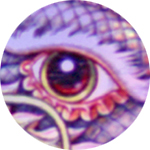Qi Jiguang's chapter 'Fist Classic' only attributes one technique to Song Taizu.
Patting Horse was passed down from Taizu all postures can be lowered and changed, charging forward to attack withdrawing retreating to shun, able to change a weak position to a strong one. The extreme perfect and best of short fist.
Again, in his ‘Chiu Liu Maneuver’ it mentions ‘pat on horse,’
”Switching and changing evenly from pat on horse, striking people and taking their life.”

Originally Posted by
Sal Canzonieri

(from the book, The Dragons of Shanghai).
Couldn't find it on Amazon, where could I find this book?
Taizu's nephew went to battle against the Khitan, sadly lost, but his invention of the Jade Maiden afterwards makes for interesting history.
Tai Mountain Crushes the Top




 Reply With Quote
Reply With Quote




 +
+  =
=  & a
& a 


